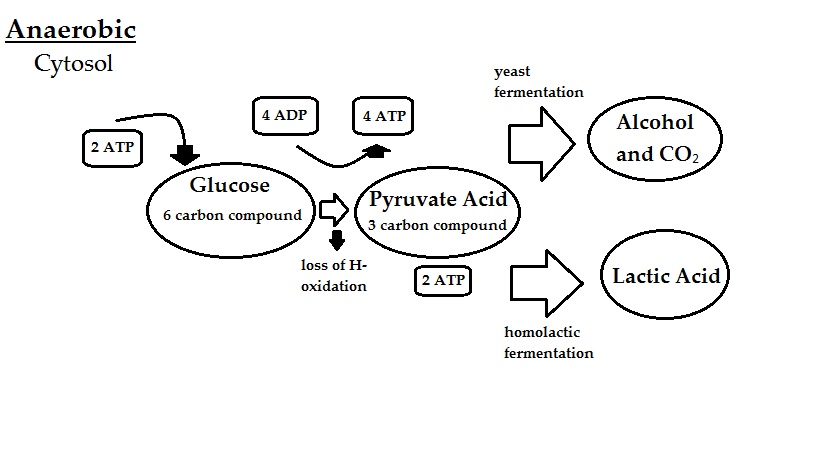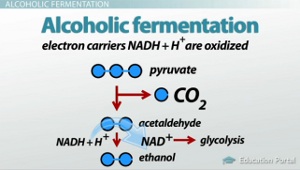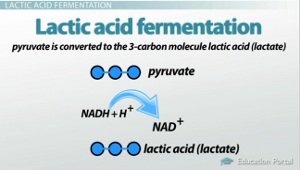Introduction

Anaerobic respiration is cellular respiration that proceeds without oxygen. Glycolysis was first developed because there was no oxygen in the atmosphere. Some organisms use anaerobic respiration when oxygen is in short supply, while other organisms can't survive in the presence of oxygen at all.
Task


You will be answering questions on Lactic acid fermentation, alcoholic fermentation, and advantages of anaerobic and aerobic respiration from three different websites.
Process
http://nourishedkitchen.com/fermented-food-lactic-acid-fermentation/
Lactic acid fermentation
1. What important purpose did lactic acid have for our ancestors?
2. What kind of reputation has fermented food gained since the 19th century?
3. What is found in fermented dairy products that is essential to producing healthy babies?
http://www.tempeh.info/fermentation/alcohol-fermentation.php
Alcoholic fermentation
1. What three things are made from alcohol fermentation that are listed in this website? Also what microorganism do they all use?
2. Why don't you get drunk by eating bread?
3. What does pyruvic acid convert to in alcoholic fermentation?
http://evolution.about.com/od/Microevolution/a/Aerobic-Vs-Anaerobic-Res…
Advantages of anaerobic and aerobic respiration
1. How can you maximize the amount of ATP made in cellular respiration?
2. What are by products of anaerobic respiration? Also where does this process occur?
3. Which process of respiration is better according to the website?
Conclusion
As an overview of the important information on these websites, Lactic acid fermentation foods are very healthy for you and give you a lot more nutrients after undergoing fermentation. Some examples of these foods are yogurt, kvass, kefir, and sourkraut. Alcoholic fermentation is most commonly used by yeast and can make bread, beer and wine. Aerobic respiration is better for making more ATP's than anaerobic respiration but anaerobic respiration makes the ATP faster.